I never liked clematis. Everyone in my neighborhood had the perfunctory clematis draping their mailbox. They were beautiful in bloom, but later did nothing for the mailbox.
Then in 2004, I met Raymond Evison at the Philadelphia Flower Show and I fell in love. Mr. Evison is one of the world's foremost experts on and hybridizers of clematis. He has been growing clematis his entire life and produces somewhere around twenty five percent of all clematis sold in the world. Some pictures from his presentation at the Philadelphia Flower Show can be seen here: http://philadelphia.about.com/library/gallery/bl2004fs197.htm
The enduring lesson I learned from Mr. Evison is that clematis can and should be grown with other plants. The vines are gorgeous when in bloom, but are not so interesting otherwise. With this simple principle, the possibilities are endless: clematis with roses, clematis with shrubs, clematis with trees, clematis intertwined with perennials, and even clematis with ground covers.
I probably now have around 100 clematis throughout my garden and I feel like I'm just beginning my collection--there are so many spaces for clematis. Clematis offer such a range of color, vigor, and bloom time that every garden could find more spaces for clematis. Each time I plant a shrub, I usually plant a clematis along with it. Lilacs, for example, are dull most of the year; by adding a clematis that blooms later like 'Venosa Violacea' (heirloom 1883), you have two seasons. Or clematis 'Madame Julia Correvon' (heirloom pre-1900)blooms at the same time as caryopteris creating a great dark pink and blue combination. Herbaceous clematis from the intergrefolia group like 'Hakuree' can be planted to weave in and out of perennials. If you have a shady spot you wish to brighten, many of the lighter colored clematis actually preform better there than they do in full sun. The part sun will not reduce their blooming power and will make the color of the flowers more vibrant. Two good clematis for part sun and northern exposures are 'Dawn' and 'Asao.' On a low evergreen, the upward facing, vase shape blooms of the 'Texensis Viorna' group are beautifully set off.
Some people shy away from clematis thinking that they are difficult to prune and grow. If you don't want to deal with pruning decisions buy clematis in group 1 which don't need pruning or in group 3 which you cut back to two to three buds in the late winter. As for growing, if planted deeply--at least two to three inches deeper than they are in the container--success is almost assured. Clematis have a remarkable ability to regenerate from underground shoots. I have had vines that look like they have not made it through a transplant or have fallen victim to clematis wilt that come back later in the season or the following one. Once chosen and planted well, just fertilize and keep well watered.
If Mr. Evison was not enough inspiration, in August 2007, The New York Times wrote about Barbara Packer and "The Climbery, her seven-acre clematis garden...near Livingston, N.Y., in Columbia County. With 600 varieties and 6,000 vines, it’s the largest private clematis collection in the world, according to the International Clematis Society." Like many of us, Ms. Packer is not a professionally trained gardener, but this is no encumbrance to her being passionate about her garden. If you are reading his blog, I'm sure you know what I mean. For the full article, click here: http://www.nytimes.com/2007/08/31/travel/escapes/31away.html?pagewanted=all
For a prior post about the Betty Corning clematis on my arbor, click here: http://heirloomgardener.blogspot.com/2008/01/two-perfect-flowering-plants-for-arbors.html
The pictures below are: 'Ville de Lyon' (heirloom 1899) growing in full son on Goldberry Hill; 'Asao' growing in shade under our deck; and 'Etoile Violette' (heirloom pre-1885) growing in full sun on the deck.


Welcome to Heirloom Gardener
Monday, January 28, 2008
My Love Affair with Clematis: Inspiration from Raymond Evison and Barbara Packer
Subscribe to:
Post Comments (Atom)
Search Heirloom Gardener
Labels
- About Blogging
- Annuals/Biennials and Perennials
- Autumn Garden
- Books and Movies
- Botanical Gardens
- Bulbs and Tubers
- Children's Garden
- Chrysanthemum
- Clematis
- Container Gardening
- Crocus tommasiniasus roseus
- Cut and Forced Flowers
- Cutting and Rose Gardens
- Dahlias
- Deep Thoughts About Gardening
- Egg Garden
- Fences Arbors Walls and Paths
- Floral arrangements
- Front Border
- Fun Stories About Gardening
- Garden Bloggers' Bloom Day
- Garden Bloggers' Design Workshop
- Garden Planning
- Gardening Blogs
- Gardening Tools and Structures
- Gardening with Children
- Goldberry Hill
- Heirloom and Organic Food
- Hibiscus
- Holidays
- Hydrangeas
- Japanese Beautyberry
- Lilies
- Mixed Borders
- New Jersey / Local Interest
- Nurseries
- Online Gardening Resources
- Peonies
- Pest Control
- Picture This Photo Contest
- Piet Oudolf
- Poppies
- Propagation and Seeds
- Pruning and Maintenance
- Roses
- Seed Heads
- Self Seeders
- Shrubs
- Spring Garden
- Summer Garden
- Trees
- Wildlife in the Garden
- Winter Garden
- Zinia
Blog Archive
-
▼
2008
(202)
-
▼
January
(21)
- An Inspirational Story About Clematis: Uno Kivist...
- My Love Affair with Clematis: Inspiration from Ra...
- Front Border in Summer & Plan for the New Path
- Two Perfect Flowering Plants for Arbors: Betty Co...
- When Do You Force Forsythia? Now is the Time
- Gardening on a Hill: Goldberry Hill in Summer - P...
- The Egg Garden Path Makeover: Replacing the Terra...
- Living and Gardening Around Chatham, New Jersey
- The Rose Garden in Spring & Summer; Daffodils Repl...
- A Garden for Late Summer: the Long Border
- No Space is Too Small for a Garden: the Triangle ...
- The Egg Garden in Summer
- The Front Border Last Spring With Tulips
- Gardening on a Hill: Goldberry Hill Last Spring w...
- Some of Heirloom Gardener's Must-Have Gardening Books
- Old House Gardens Nursery & Heirloom Dahlias
- Amaryllis in Bloom
- Something to do with Impatiens at the End of the S...
- Renegade Gardener Blog: The 10 Tenets of Renegade...
- Plant Delights Nursery & Heirloom Hostas
- The Garden Conservancy: Preserving Exceptional Am...
-
▼
January
(21)










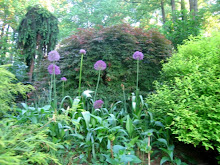
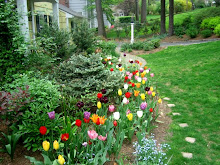
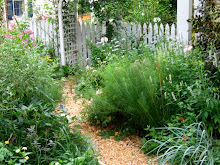
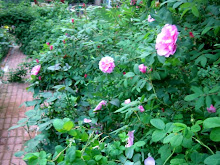

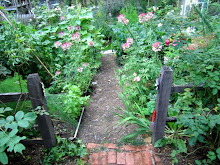

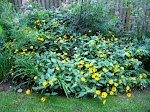





7 comments:
Oooo I love clematis and you have given me some new ideas about how to use them. I especially like the idea of getting them to grow with lilacs. I have some that are a true bore most of the summer. I will remedy that this summer thanks to your suggestion.
Hi there. Thanks for visiting my site the other day. The mix up on the links was suppose to read Heirloom Rose Gardening in NJ, although the owner is doing more general gardening. She runs the Garden Voices site.
I am glad I stopped by as I love your site and will try and get those links on my site straightened out. I will add yours to the list.
Your garden looks great.
Digital Flowers,
Thank you so much and sorry for the confusion.
-Heirloom Gardener
Interesting post. Austin isn't the most hospitable place to grow clematis, and it isn't commonly seen around here (too hot and dry). But it is so beautiful that some dedicated gardeners do make a go of it. I like your idea of letting it ramble through other plants. My one native-hybrid clematis, Clematis texensis 'Duchess of Albany,' rambles through an American beautyberry to nice effect.
Of course, I covet the big, open flowers of the clematis in your photos. Sigh.
I really like clematis with ornamental seed heads but nearly removed my clematis when I moved into my new house (very very glad that I didn't).
Thanks for the inspirational post.
Hi,
I have been trying to identify a clematis that I have. I see you have the same one. Can you tell me the name of it? It's the middle photo, 7 pink petals, darker on the outside of the petal. Here is a link to the photo of mine:http://aminnesotagarden.blogspot.com/2008/06/clematis-pink.html
Thanks in advance for any help you can give me.
Hey, there is really much worthwhile material in this post!
Post a Comment